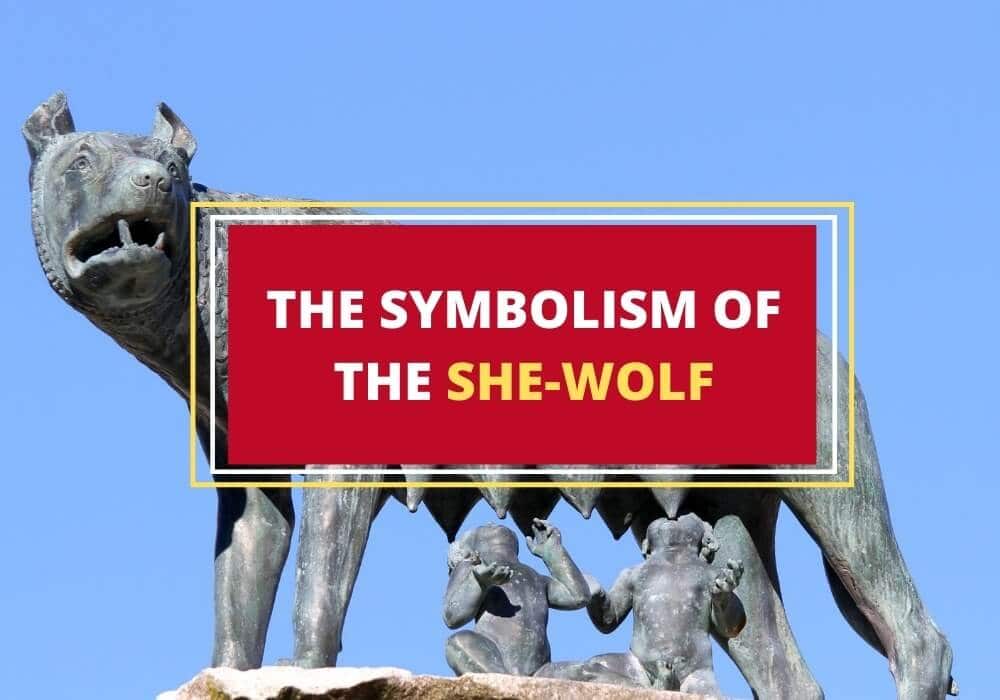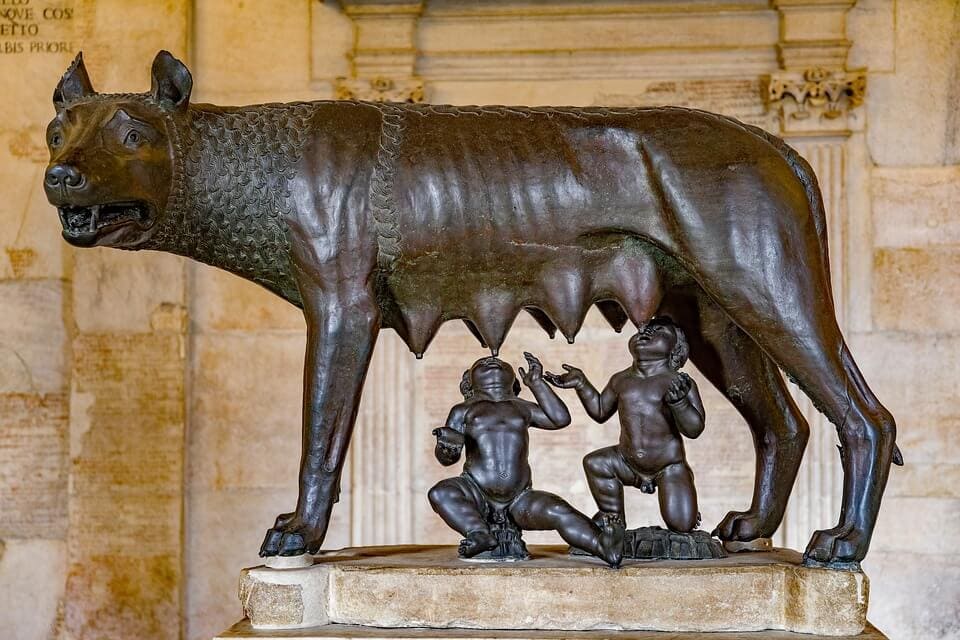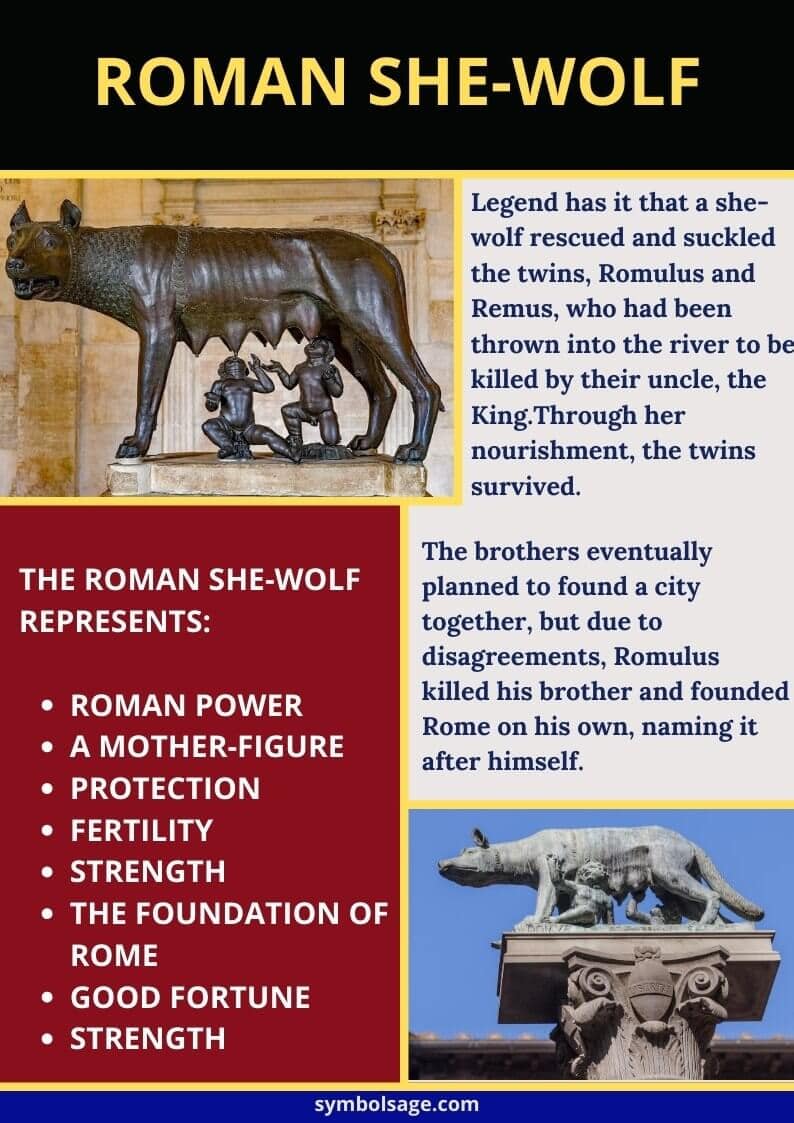
Table of Contents
The she-wolf is an essential symbol of Roman history and culture, and appears throughout the city in various types of artwork. Wolves, in general, are important to Roman culture, but the she-wolf is the most notable. In fact, according to legend, the very founding of Rome depended on a she-wolf.
Here’s a closer look at the importance of the she-wolf in Roman history.
History of the She-Wolf

The Roman she-wolf is an iconic symbol of Rome. She’s often featured as a female gray wolf nursing two human boys, believed to be the twins Remus and Romulus. This image is depicted in many Roman artwork, including statues and paintings.
Notably, a bronze statue of the she-wolf suckling twin boys sits in Rome’s Capitoline Museum – known as the Capitoline Wolf and dating back to the Middle Ages. While most commonly associated with Rome, the statue possibly originated from Etruria, a Greek region of Central Italy. Evidence also suggests that the figure may have been initially made without the twins but these were later added to represent the founding myths of Rome.
The Legend of The She-Wolf and Romulus and Remus
The legend behind the figure relates to the founding of Rome and its first ruler, Romulus. Accordingly, the twin boys, Romulus and Remus, had been thrown into the river by their uncle, the king, who saw them as a threat to the throne. Luckily, they were rescued and suckled by the wolf, who nourished and strengthened them. Romulus and Remus, whose father was the god of war, Mars, eventually went on to found the city of Rome, but not before Romulus had killed Remus for disagreeing with him on where to found the city.
According to this legend, the she-wolf plays an important role in the founding of Rome. Without her nourishment and protection, the twins would not have survived and would not have gone on to found Rome. As such, the she-wolf is seen as a protector, a mother-figure and a symbol of power.
Symbolism of the She-Wolf
The she-wolf of Rome represents the following concepts:
- The she-wolf represents Roman power, which made her a popular image throughout the Roman Republic and Empire. The connection between the Roman state and the she-wolf was such that there were at least two dedications to the she-wolf performed by priests.
- Wolves, especially she-wolves, are a sacred animal of the Roman god Mars. It is believed that they acted as divine messengers, thus seeing a wolf was a good omen.
- The she-wolf is associated with the Roman Empire’s wolf festival Lupercalia, which is a fertility festival that starts at the estimated spot where the she-wolf nursed the twin boys.
- The she-wolf also comes across as a mother-figure, representing nourishment, protection and fertility. By extension, she becomes a mother-figure to the city of Rome, as she lies at the very heart of its establishment.

Other She-Wolf Associations
It is important to distinguish the Roman she-wolf from other notable depictions of and references to she-wolves, including:
- The she-wolf seen in Dante’s Inferno, where she is depicted as a starved horror that represents extreme greed.
- The songs called She-wolf by Megabeth, David Guetta, and Shakira, which represents the she-wolf as a femme fatal or a dangerous woman out to get the man.
- The novel and short story that are both called The She-Wolf or any of the films by the same name.
- In the English lexicon, the term she-wolf often refers to predatory females.
Conclusion
The she-wolf is a reminder of the history and former power of the Roman Empire, representing the city’s founding. As such, the she-wolf is at the heart of Roman myths and history, as a mother-figure to the nation. To this day, it remains a symbol of pride for the city of Rome.








